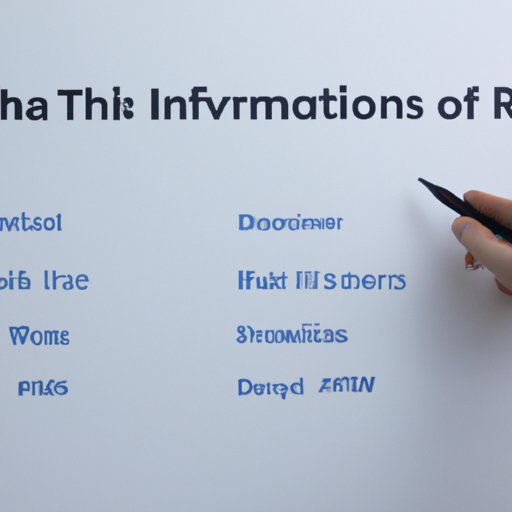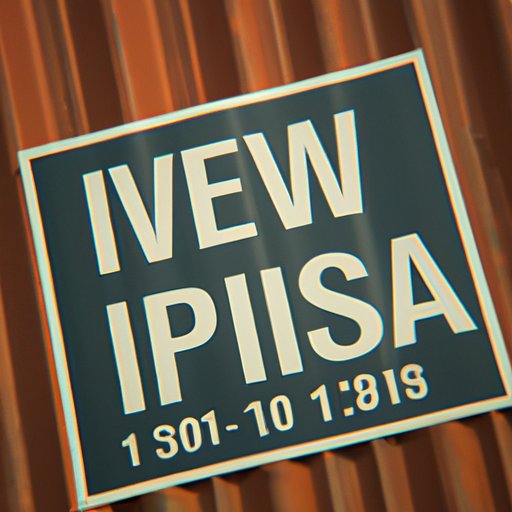Introduction
An Individual Retirement Account (IRA) is a type of retirement savings account that offers tax advantages when used for retirement savings. The funds in an IRA can be invested in a variety of ways, including stocks, bonds, mutual funds, and other investments. There are several types of IRAs available, each with its own set of rules and regulations. This article explores the different types of IRAs and what to look for when choosing the best IRA to invest in.

Analyzing the Different Types of IRAs and Which is Best for Your Situation
The most common types of IRAs are Traditional IRAs, Roth IRAs, SEP IRAs, SIMPLE IRAs, and Self-Directed IRAs. Each type of IRA has its own set of benefits and drawbacks, so it’s important to understand the differences between them before making a decision.
Traditional IRA
A Traditional IRA allows contributions to be made on a pre-tax basis, meaning the contributions are deducted from your taxable income. Earnings within the IRA grow tax-deferred until you begin taking distributions at retirement. Withdrawals prior to age 59 1/2 may be subject to taxes and early withdrawal penalties. Contributions to a Traditional IRA may be limited based on income level.
Roth IRA
A Roth IRA allows contributions to be made on an after-tax basis, meaning the contributions are not deductible from your taxable income. Earnings within the Roth IRA grow tax-free and withdrawals at retirement are also tax-free. Contributions to a Roth IRA may be limited based on income level.
SEP IRA
A SEP IRA stands for Simplified Employee Pension Plan and is designed for small business owners and self-employed individuals. Contributions to a SEP IRA are made on a pre-tax basis and earnings grow tax-deferred until withdrawn. SEP IRAs are funded by employer contributions only and have higher contribution limits than Traditional or Roth IRAs.
SIMPLE IRA
A SIMPLE IRA stands for Savings Incentive Match Plan for Employees and is designed for businesses with 100 or fewer employees. Contributions to a SIMPLE IRA are made on a pre-tax basis and earnings grow tax-deferred until withdrawn. SIMPLE IRAs are funded by employer and employee contributions and have higher contribution limits than Traditional or Roth IRAs.
Self-Directed IRA
A Self-Directed IRA is a type of IRA that allows the account holder to make their own investment decisions. The investments allowed in a Self-Directed IRA are typically more diverse than those allowed in other types of IRAs. Self-Directed IRAs are subject to the same tax rules as other types of IRAs.
Comparison of each type of IRA
When deciding which type of IRA is best for you, it’s important to consider the differences between them. Traditional and Roth IRAs are the most widely used and offer the most flexibility in terms of investment options. SEP and SIMPLE IRAs are better suited for small business owners and self-employed individuals. Self-Directed IRAs allow for the widest range of investment options, but require more knowledge and experience to manage.
Comparing IRA Investment Options: What to Look For
When comparing IRA investment options, there are several factors to consider. Diversification is important to minimize risk and maximize returns. Fees and taxes can significantly reduce returns, so it’s important to understand how they will affect your investments. Risk tolerance should also be taken into account when selecting investments. Finally, it’s important to understand your investment objectives and how the investments you choose can help you reach those goals.
Choosing the Right IRA for Long-Term Retirement Savings
When choosing an IRA for long-term retirement savings, it’s important to do your research. Understanding the tax implications of the different types of IRAs is critical to ensuring you make the most of your retirement savings. Assessing your current financial situation is also important to determine which type of IRA will best meet your needs.

How to Choose an IRA for Maximum Growth Potential
When investing in an IRA, it’s important to consider a variety of investment options. Investing in stocks, bonds, and mutual funds can provide a level of diversification and growth potential. Utilizing brokerage accounts can provide access to a wider range of investments. Exploring index funds can provide a low-cost option for investors looking for broad market exposure.

A Guide to Selecting the Best IRA for Your Financial Goals
When selecting an IRA, it’s important to set both short-term and long-term goals. Determining your asset allocation is also important to ensure your portfolio is diversified and meets your risk tolerance. Evaluating the performance history of potential investments can help you select the best options for your situation.
Conclusion
Selecting the best IRA to invest in can be a daunting task. It’s important to understand the different types of IRAs and their associated risks and benefits. Comparing investment options and understanding the tax implications of each type of IRA is also essential. Ultimately, the best IRA for you will depend on your individual financial situation and goals. By doing your research and selecting the right IRA for your needs, you can maximize your retirement savings and achieve your financial goals.
(Note: Is this article not meeting your expectations? Do you have knowledge or insights to share? Unlock new opportunities and expand your reach by joining our authors team. Click Registration to join us and share your expertise with our readers.)
